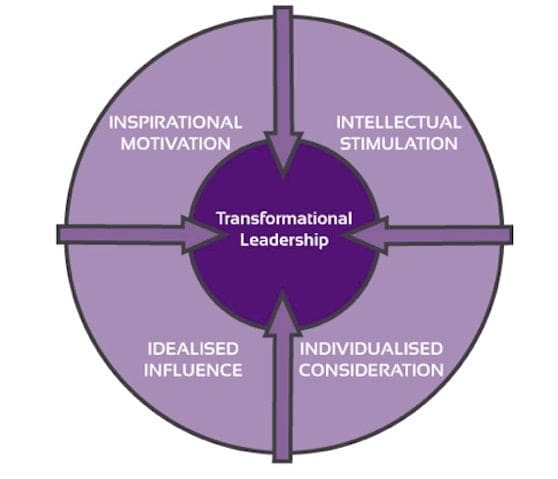
Examples of Transformational Leadership: Inspiring Leaders

Discover the power of transformational leadership with real-life examples Unleash your potential as a leader and inspire others to do the same Join the ranks of those who have changed the world through visionary leadership
Leadership is a topic that is widely discussed and written about across the world, with numerous individuals delivering speeches, penning articles and books on the subject on a daily basis. However, the complexity of leadership makes it challenging to define accurately. Over the course of history, various forms of leadership have been observed, with exceptional leaders leaving their mark in their respective fields. These leaders have demonstrated unique styles, levels of intimacy with their teams, and distinct personalities and beliefs.
The concept of Transformational Leadership has been around for ages, but it was James McGregor Burns who introduced it formally in his book ‘Leadership’ in 1978. This theory has been used by countless leaders throughout history, regardless of the size of their teams. However, it wasn't until Burns put it into writing that it became a recognized concept. Bernard M Bass later expanded upon this theory in 1985, outlining the specific qualities that a transformational leader should possess.
What is transformational leadership? let us understand what exactly transformational leadership is for leaders.
An effective transformational leader possesses the ability to inspire and motivate their team, establish clear objectives, maintain high performance standards and expectations, exhibit fairness and integrity in their work, acknowledge and appreciate their team's contributions, encourage employees to prioritize the company's success over their own interests, and push individuals to exceed their own potential.
The most important aspect of transformational leadership
Transformational leadership is a powerful leadership style that involves the leader and their team in identifying challenges and resources, as well as creating a long-term vision for the team. This style of leadership encourages constant engagement and involvement of employees, allowing them to perform to the best of their abilities while growing both professionally and personally.
A true leader not only focuses on their own success and achievements, but also takes the initiative to mentor and support their team, utilizing their knowledge and expertise to help their subordinates develop successful careers. This is the essence of the transformational leadership theory, which is depicted in a diagram that highlights the key components of a transformational leader: inspirational motivation, intellectual stimulation, individualized consideration, and idealized influence. These concepts were all previously discussed in the paragraph above.
6) Motivating employees – A transformational leader understands the importance of motivating employees to reach their full potential. They create a work culture where employees feel valued and appreciated, and provide opportunities for growth and development. By doing so, employees are more likely to be engaged and committed to achieving the organization's goals.
7) Encouraging creativity – A transformational leader fosters a culture of innovation and creativity within his team. He encourages his subordinates to think out of the box and come up with new ideas. This not only leads to better problem-solving but also helps in the growth and development of the team. The leader appreciates and rewards innovative thinking, and provides the necessary resources and support to turn those ideas into reality.
Individualized consideration is a key trait of a transformational leader. This means that a leader must recognize each individual's unique needs and treat them accordingly. By understanding their strengths and weaknesses, the leader can motivate and inspire their team to achieve better results. Additionally, a transformational leader knows how to delegate tasks to the right people, ensuring that the team operates smoothly and efficiently. This approach fosters a sense of confidence and trust among subordinates, leading to a more productive and positive work environment.
Examples of Transformational Leadership And Leaders
Let us now look at a few examples of transformational leadership in the world and see how leaders functioned.
Elements of transformational leaderships
Steve Jobs was a true visionary and a transformational leader who instilled a culture of perfection, simplicity, and sophistication at Apple. He challenged his employees to push the boundaries of innovation and create products that revolutionized the tech industry. His influence was so profound that his legacy continues to inspire and shape the company to this day.
Similarly, Martin Luther King Jr. was a powerful advocate for justice and equality, and his efforts to end racism in America inspired people around the world. He believed in the power of peaceful protest and encouraged others to join him in the civil rights movement. His message was not just about his own struggle, but about promoting humanity and creating a better world for all.
Leaderships Vision That Inspires Other Leaders
Mahatma Gandhi is a well-known example of a transformational leader who provided direction and purpose to the Indian freedom movement. Gandhi transformed the movement from a collection of fragmented interests and limited participation to a mass movement where every citizen's contribution counted. His theory of non-violence played a crucial role in bringing people together and creating a united front towards achieving freedom. Gandhi's leadership inspired millions, and his legacy continues to impact the world today.
Barack Obama, the first African American President of the United States, was beloved worldwide for his compassion and leadership. His belief in open communication and creativity without boundaries inspired his staff and increased efficiency throughout his administration. His humane approach to leadership made him approachable and respected, helping to maintain world peace.
Nelson Mandela, South Africa's first black President, successfully fought to destroy apartheid with his charismatic transformational leadership style and passion for humanity. He worked tirelessly to uplift society and envisioned a brighter future for black people around the world. His ability to connect with the masses and inspire them made him a beloved and affectionate leader.
NEXT
Types Of Leadership
PREV
Transformational and Transactional







